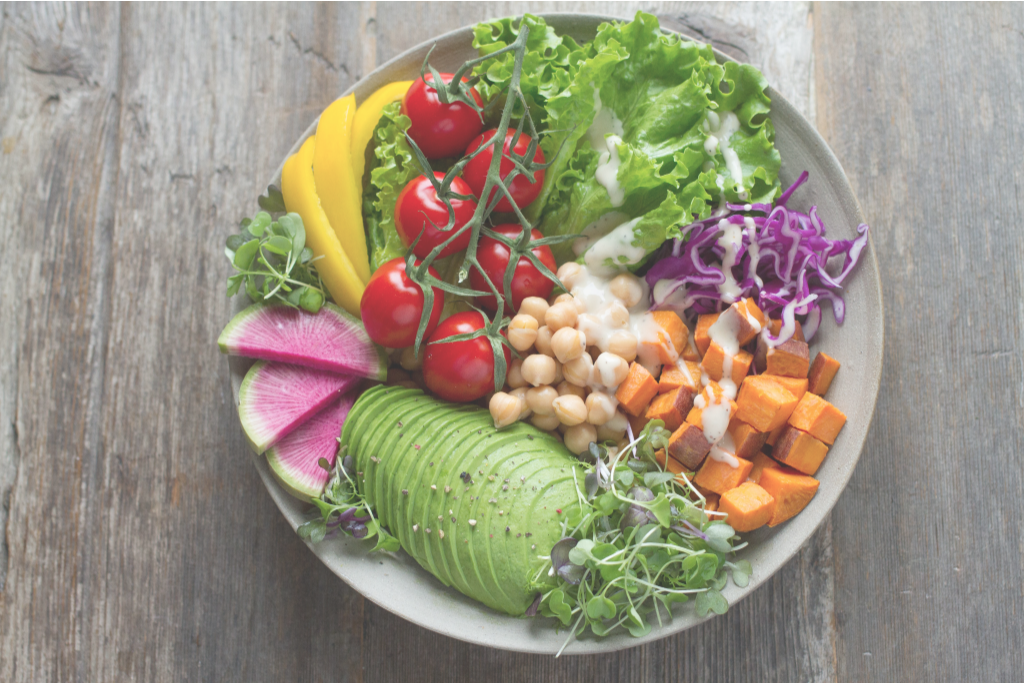
Has counting macros become one of your daily habits? Or counting points in Weight Watchers world? Counting calories? Weighing yourself daily on the scales? I mean I get it, I used to count. Once upon a time I could’ve told you how many calories were on my plate, so I hear you loud and clear! It can feel like a sense of control, it means you are looking after your health and if I stop counting it’ll all go pear-shaped, right? No, it doesn’t and it won’t.
It makes me shake my head because counting leads to disengagement with what we physically need, our bodies will tell us what we need, if we listen. If counting calories, macros, whatever it may be, you will often overeat or undereat, all to fit in the daily quota.
And let’s be honest, “counting” is all associated with achieving what we believe to be the ideal physique. And newsflash, there is no ideal physique, only what incessant marketing tells you it is. Marketing that is designed to make you feel less than, unworthy, unattractive, but you know what, marketing changes the goalposts because they are in it to make money. And if they continue to change the goalposts then you’ll never get there.
You won’t win the marketing game and life is short, let’s not spend it making our life goal to lose weight. You are far more interesting than your dress size, your weight or if you’ve got abs. The ideal physique for you, is your physique.
So anyway, I jumped off track there, back to macros bro!
The Weight Watchers peeps will say “I’ll save my points for tomorrow or later in the week”. The Macros peeps will say “I’ve got to meet my macros”
There’s always some diet, a weight loss protocol, race nutrition or a cleanse being promoted by influencers, your friends, your training buddies or your coach or PT. I doubt any of these people have an in-depth understanding of your health, your hormones, your relationship with food, any of it.
Counting macros is one of the most recent ways to turn food into numbers by counting your macronutrients (carbohydrates, fats, and proteins). It’s easy to follow, but the main part that is often being missed is there is far more to the food we eat than macronutrients. There is the all-important factor of micronutrients, these are the vitamins, minerals, and phytochemicals (these guys are plant nutrients).
Could you do a “macro” diet and gain all your micronutrients too? Sure, you could, but it doesn’t often work this way. I assess people’s diets daily and many are following a macro approach and it comes back to turning food into numbers which creates a less than healthy food relationship. Don’t get me wrong, you won’t see me eating 100% organic whole foods every day but you also won’t see my creating a bowl of random powdered product mix to meet my macros, because health is far more holistic than meeting a daily quota.
It’s the micronutrients that work as messengers within the body and has important jobs to do, with deficiencies in micronutrients that are often associated with many health conditions.
Fats – the type of fats you consume is important. If all the fat we consumed was saturated fat i.e. butter, dairy this wouldn’t be awesome for our health. Including essential fatty acids, the omegas, found in fatty fish, hemp seeds & chia seeds is important for cognition (brain health) and supporting hormone production.
Dark Blue & Purple foods – contain anthocyanins, polyphenols & resveratrol which helps reduce inflammation, antioxidants to support memory, promote a healthy gut microbiome and healthy heart function.
Red foods – contain lycopene, ellagic acid, quercetin & hesperidin which are helpful in prostate health, joint tissue in arthritis and immune support.
Orange foods – contain vitamin C, beta-carotene to convert to vitamin A, zeaxanthin for eye health, collagen formation (essential in injury prevention) and a healthy mucous membrane in the gut.
Green foods – contain chlorophyll, folate, indoles, vitamin K to name a few to support liver detoxification, eye health and healthy blood pressure. The darker the green the better it is!
Brassica Vegetables – include broccoli, cauliflower, Brussel sprouts, cabbage, kale, bok choy. These are sulfur containing vegetables that contain the powerful liver detoxification compounds sulforaphane and indole-3-carbinol & help with healthy hormone metabolism.
Beta-glucans – found in mushrooms & great for immune function and to support healthy cholesterol levels.
These are just a few examples of the importance of variety and colour in the diet.
Eat a Rainbow!
If you’re going to count, count how many colours you have on your plate in every meal. Does the plate look beige? My mother used to tell me that my colouring looked good in khaki and beige, wrong. Beige is just, beige.
Rainbows lead to a pot of gold, eating rainbows leads you to better health.






Leave a Reply